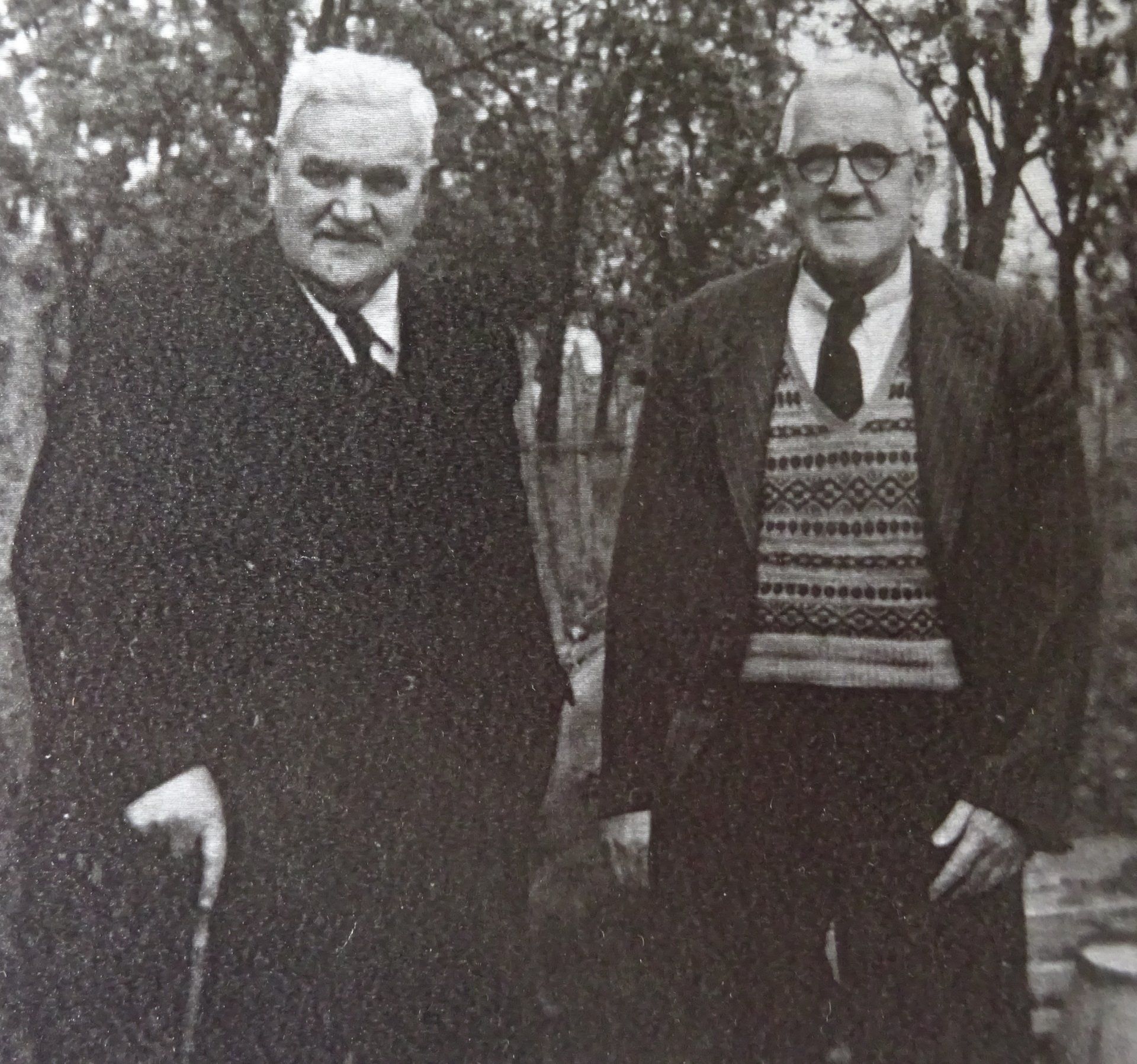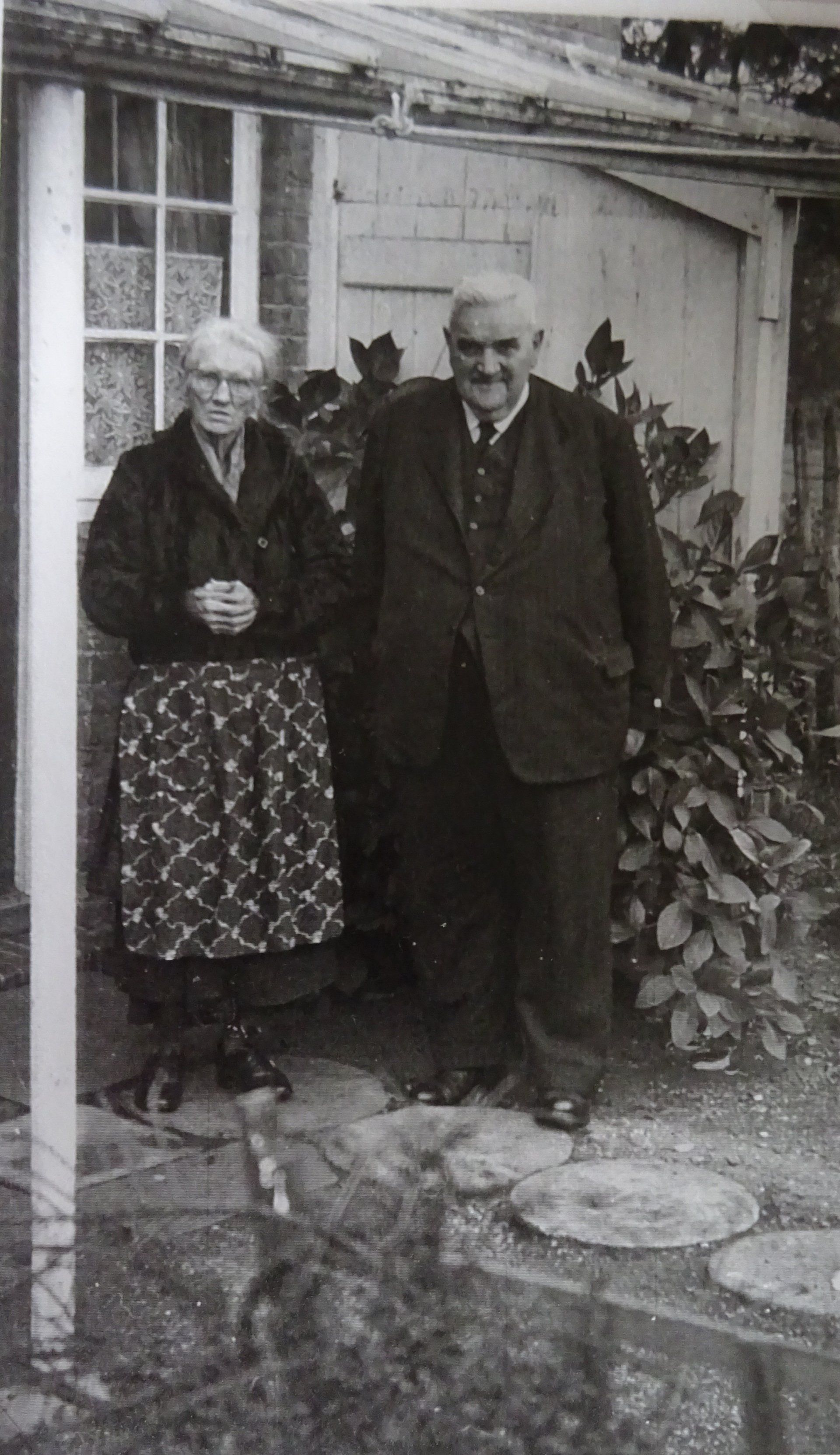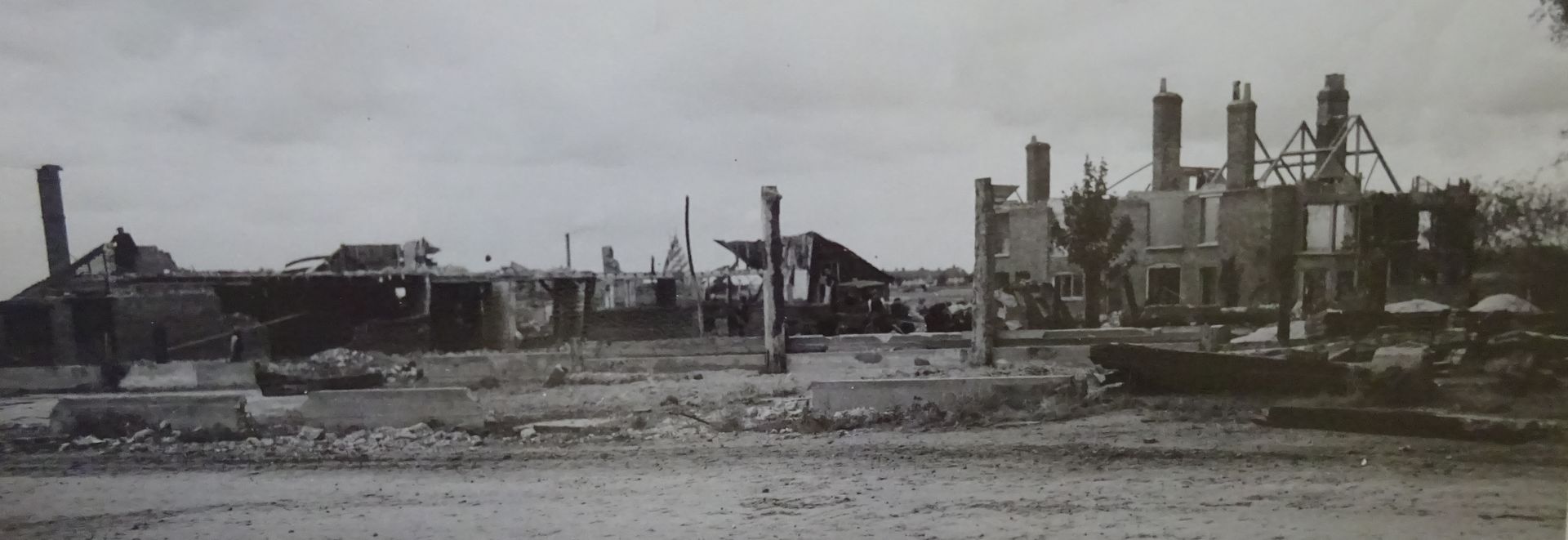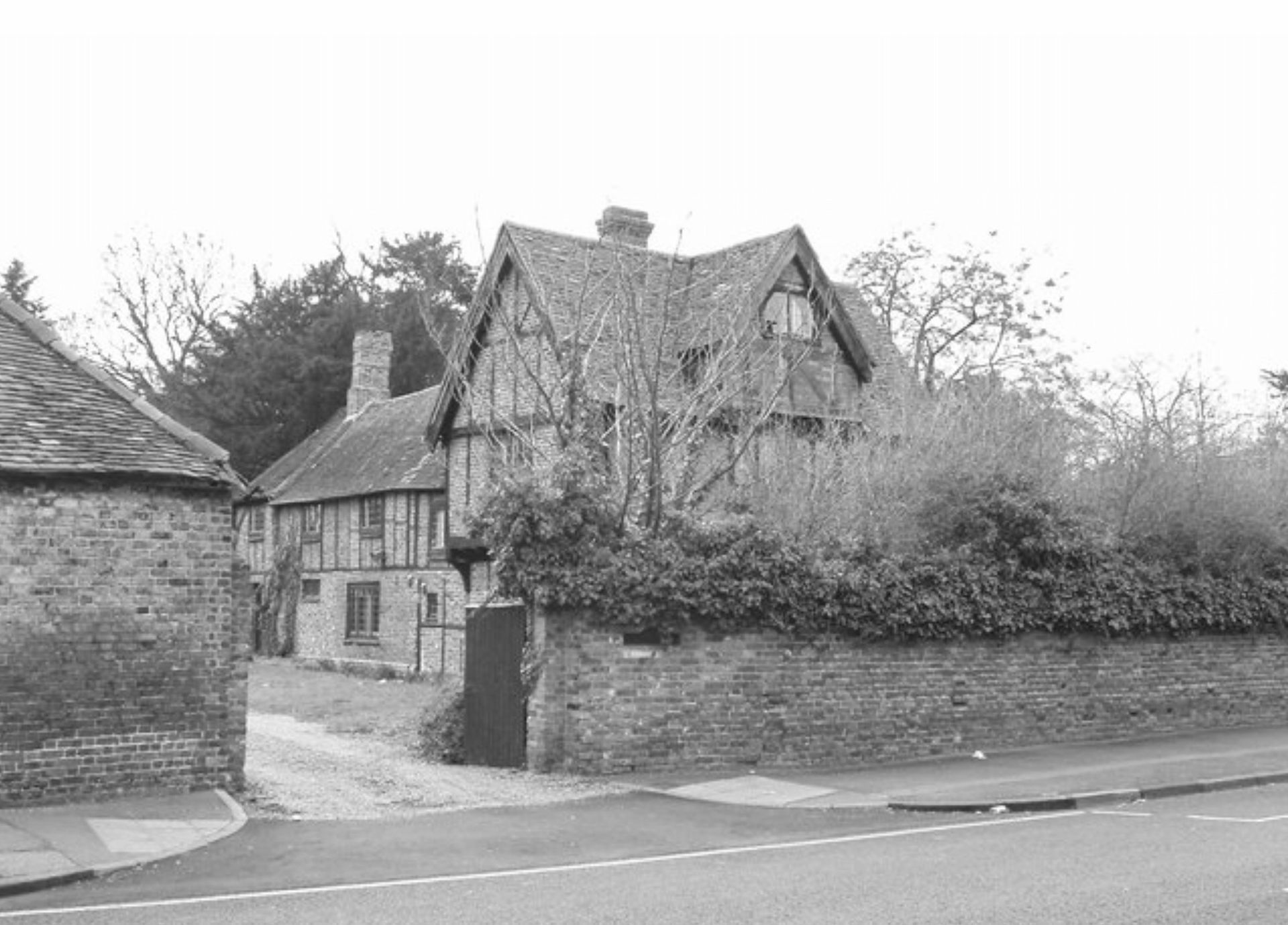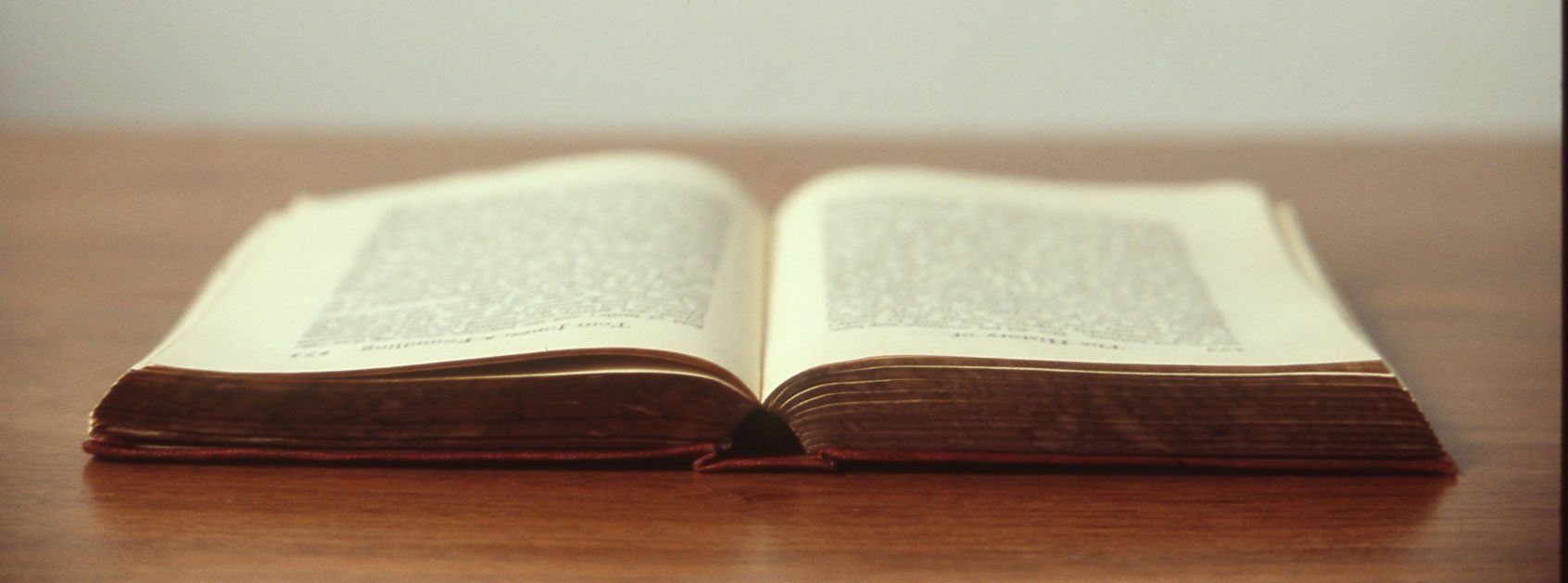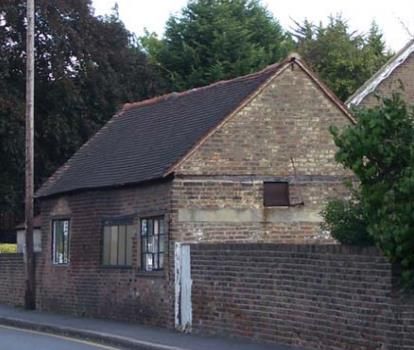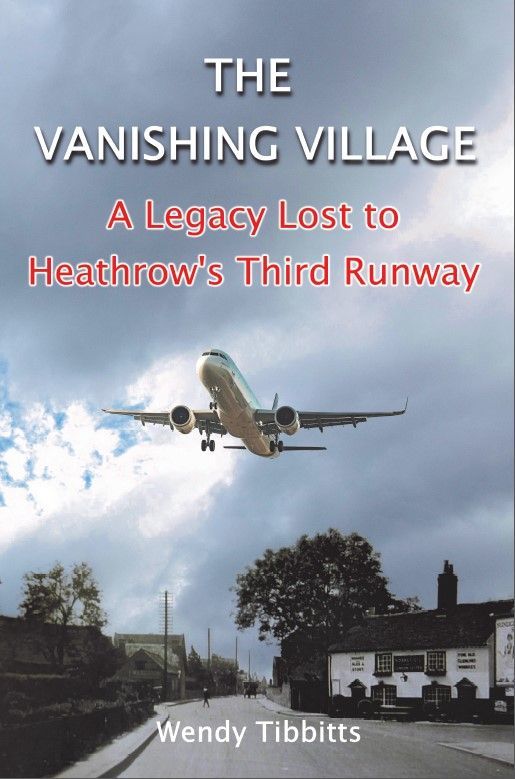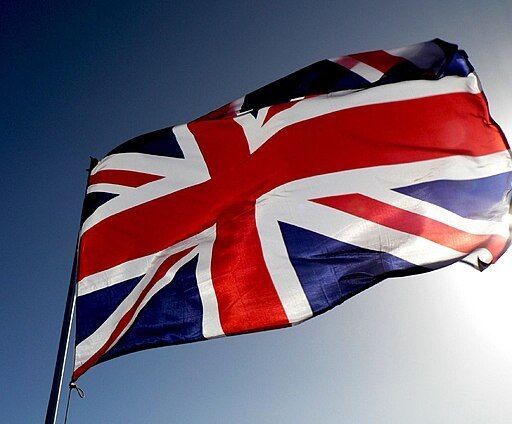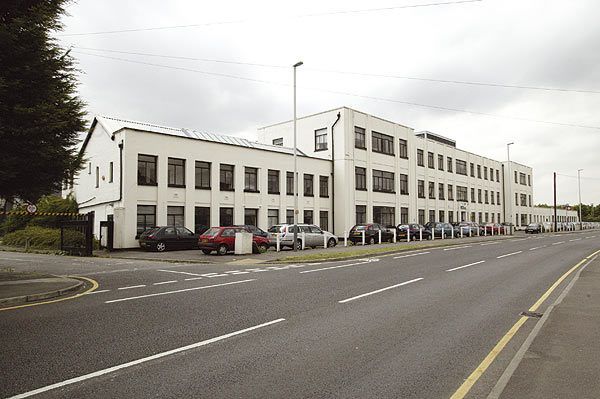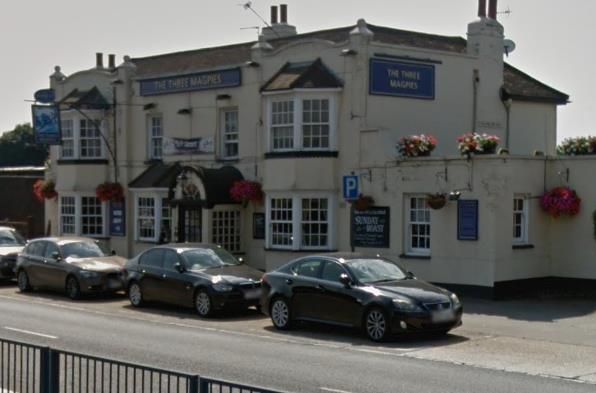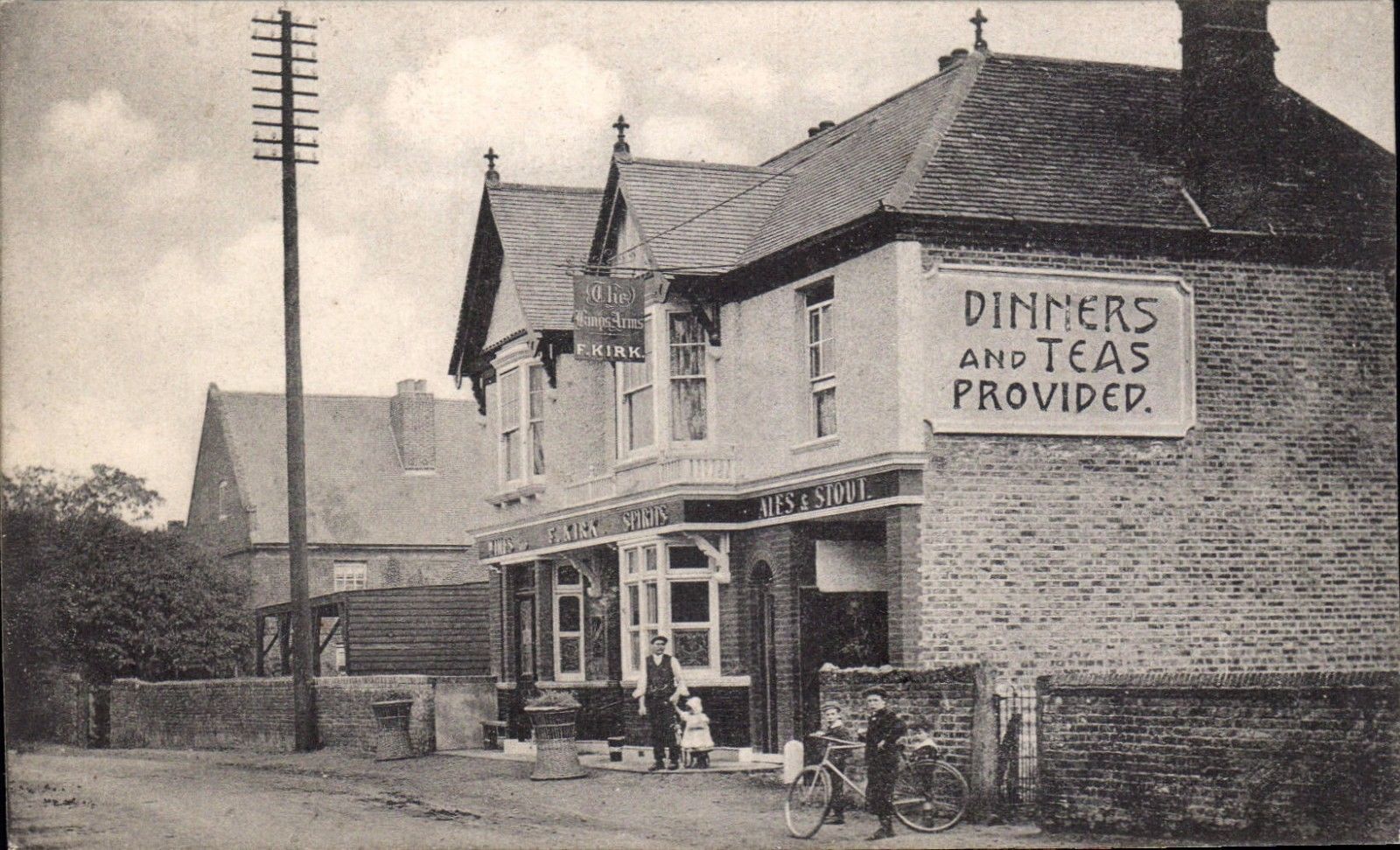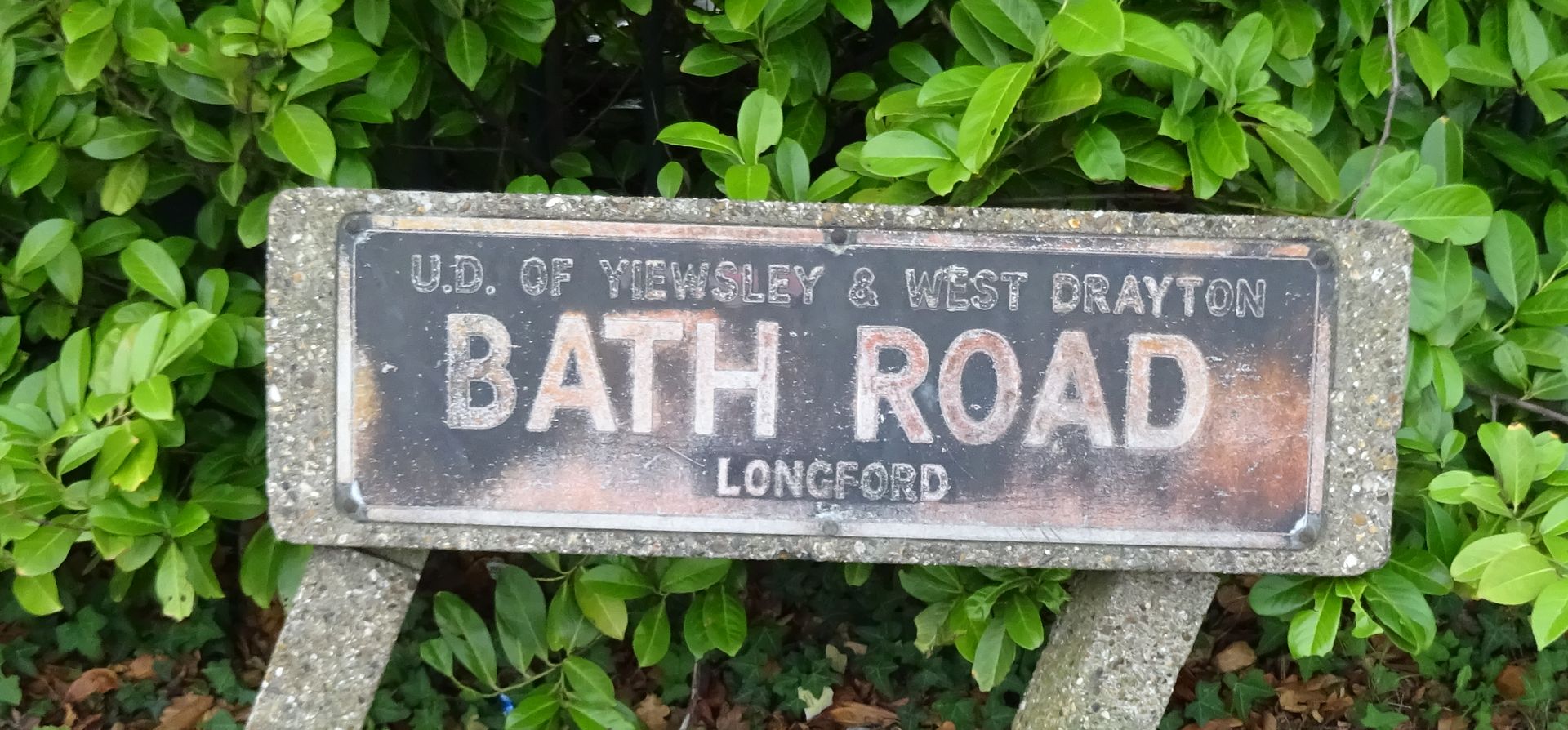Tales from Longford and Harmondsworth:
The Magnetaire, the preacher and the builder
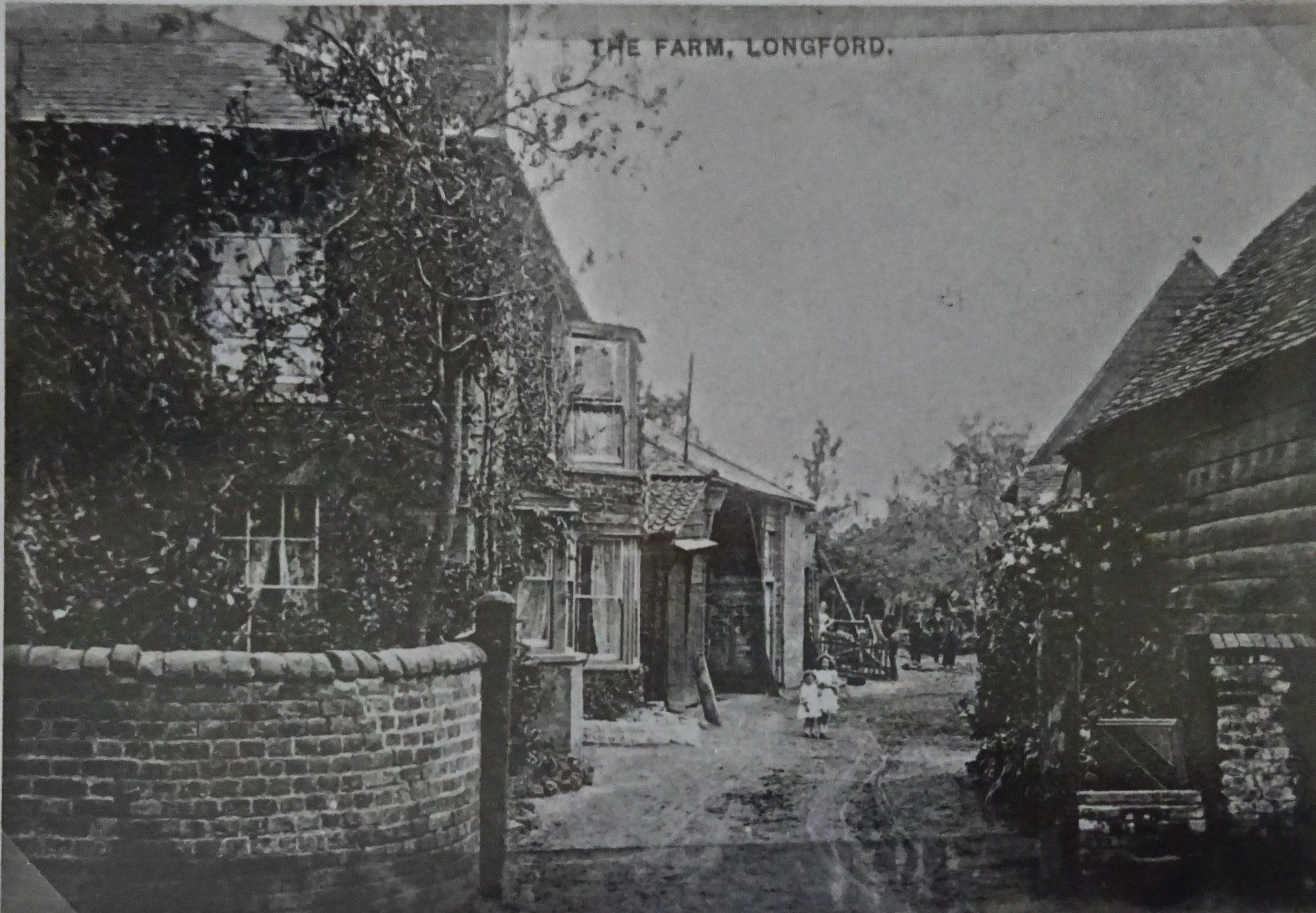
The Magnetaire was an electrical device invented and promoted at the end of the nineteenth century as a cure for all kinds of ailments. It worked by passing a weak electrical current through the body. Its inventor, Richard Lonsdale made great claims for its effectiveness, but he was considered a quack by the British Medical Association. The Magnetaire was manufactured by Light Laboratories in Brighton. This company was formed by three brothers, Arthur, Alfred and Walter Light, and it was two of these gentlemen that were to have an impact on life in Harmondsworth, Middlesex.
***
Arthur Light was the brains behind the Light Laboratories company. The company manufactured electric devices, for the medical profession, for recording body temperature, and later other equipment. His brother Alfred, who was originally apprenticed, at the age of 13, to a sadler, joined him in the business. Alfred described himself as a medical electrician in some censuses, but he also had other callings. From an early age his gift for Christian oratory was obvious and he later accepted an invitation to join the Wycliffe Preachers and to speak at meetings around the country.[1] Walter Light, eight years younger than Alfred was helping his brothers at Light Laboratories in Brighton, but he was also publishing ‘penny dreadfuls’. These were cheap reprints of American adventure stories. Alfred and Walter were later to make Harmondsworth their home.
Alfred would occasionally preach at the Colnbrook Baptist Chapel, and afterwards would be invited to stay overnight at the house of Henry James Wild, a Deacon of the Colnbrook Particular (or Strict) Baptist Chapel for 37 years.[2] Henry (or H.J. Wild as he was known) and his family lived at The Farm, next to the Weekly House. He was the largest farmer and employer in Longford. Henry and his wife, Mary Ann, had nine children. Their second child, Marion Jane, was born on 16 May 1870.
She grew up to be a studious, intelligent child, who regularly attended chapel in Colnbrook with her family. She got to know many visiting Baptist preachers when her father invited them to stay overnight at the farmhouse with the family. One particular visitor attracted her attention, not just for the erudition of his sermons, but also because it was difficult not to notice his size. Alfred Weldon Light weighed 27 stone. Their friendship blossomed.
Soon after they met, Alfred went to Ghana to do a preaching tour of missionary churches and when he returned to England in 1903 he renewed his relationship with Marion. They were married in 1905. She was 34 and he was 32. On census night 1911, he was living at a flat in Hampstead, London, while his wife was with her parents in Longford, but they were living apart for a reason. Alfred was writing a book on the memorials in Bunhill Fields, a historic burial ground for dissenters in the City of London, (published in 1913). Alfred later became well-known in the Baptist community, not only as an itinerant preacher, but as a reliable administrator. He accepted posts as a secretary or trustee to various organisations. He was a composer of hymns and regularly played the organ at the Baptist Chapel.
After their marriage Marion and Alfred were living in Brighton to be near Light Industries. While Alfred was away preaching Marion involved herself in the Magnetaire business. By this time the Magnetaire was being promoted by Benjamin Copson Garrett, and the business had evolved into selling a form of the magnetaire built into wearable devices such as belts and chest protectors. The gadgets were widely advertised in the Christian press and this was possibly Marion’s influence. Because of the medical fraternity’s scepticism of the effectiveness of these devices, it seems strange that Marion should throw herself into the promotion of them, but her faith probably led her to believe she was helping to bring comfort to those that were suffering. She was proud enough of her involvement in the business to describe herself, on the 1911 census form, as being an employer in the Magnetaire business, but it is not known what her exact role was.
Whilst in Brighton Marion made frequent visits to her older cousin Elizabeth Jane Humphreyson (nee Wild), originally from Hayes, who had lived in Brighton since her parents and husband died. Inevitably, Elizabeth was to meet other members of the Light family, including Alfred’s younger brother, Walter, who was a charmer and a chancer. He courted the wealthy widow and eventually the two cousins, became sisters-in-law, when the widowed Elizabeth married Walter in 1908. She was 48 and he was 26. The couple continued to live in Brighton until 1922 when Elizabeth died leaving her husband £6000 – a substantial sum at that time.
By this time Marion and Alfred had returned to Longford, and made their home at Walnut Tree Cottage, 551 Bath Road. After Elizabeth died Walter came to stay with Marion and Alfred. With his new wealth Walter immediately began investing in land in and around Longford and Harmondsworth, probably with added investment from Marion and Alfred. Walter set up a building company call Lindsay Building Company Ltd., in Station Road, West Drayton. He remarried in 1924 and bought a house, “Te Kupe”, in Hatch Lane, Harmondsworth. Whereas Marion, who taught at Sunday School for many years, and Alfred, who continued to preach, (although in later life he preached sitting down because of his size) concentrated on their church work, Walter involved himself in community affairs. In 1928 he was nominated for the Staines Rural Council. In December 1929 he presided over the inaugural meeting of the Harmondsworth Liberal Association, held in the Vicarage Hall, and was elected Chairman of the Association. His new wife was one of the committee members.
In May 1928 Walter Light put 30 acres of orchards and meadow land, on the banks of the River Colne at Longford, at the disposal of the Health First Association and other “open air” organisations such as the Camping Club of Great Britain and Ireland and the Boy Scouts Association.[3] Walter had installed a well and a pump on the land; had had the river dragged and weeds removed to provide bathing facilities; and hung life-buoys in the trees. The camp also had its own letter box and telephone. There was a camp manager and a flag-pole flying the Union Flag. The camp was open for fifteen weeks and used by over 5000 outdoor enthusiasts. Each weekend there were talks and activities at the camp. Just how the rural community of Longford felt about having such an influx of campers (some of them nudists) in their midst can only be imagined.
The two brothers heard that a seven acre orchard was for sale off Hatch Lane, Harmondsworth, owned by Mr Bateman of Manor Farm. They bought the land, dug up the fruit trees, and by the end of the 1920s had built an estate of houses there. The semi-detached houses sold for £695 each. They named the road, Candover Close.
Having made a success of his development of Candover Close, Walter Light was now on a spending spree for land in the area. Sometimes he bought land outright sometimes he just bought an option to buy. He knew that in the inter-war years, turning any farmland that had a road frontage into housing was a money-maker, but things did not always go to plan. In 1931 Walter and Harry Charles Baillie Underdown formed a company, at the Station Road address, to develop and build the Colne Park Estate in West Drayton. Walter had an option to buy land there and this new company bought some of the land. The problem was that it had no road frontage so before they could build any houses they had to build a section of Sipson Road and add all the necessary services. This took up half their capital and the Company was stretched so much that they needed a mortgage on the twelve houses they were about to build. The completion of the houses coincided with a slump in the market and they failed to sell the houses. The company then tried to dispose of the rest of its land, but there was no demand for land, either. To raise capital they sold bonds to friends and family, but none of these were ever redeemed. Eventually The Board of Trade applied for compulsory liquidation of the company in 1935 when the company had gross liabilities of £32,367.[4]
In the interval between 1931 and 1935 Walter was continuing to buy land in the area, but with little capital he had to be inventive and this brought him up against the authorities. He was in Court in June 1931 because of a dispute over land. Mrs Alice Sherwood of Bath Road, Harmondsworth claimed an injunction restraining Walter Light of Hatch Lane, and George Albert Green of Swinley, Bath Road, Harmondsworth, from trespassing on her land and asked for the wire fence they had recently erected on this land to be removed and for Mr Light to restore her gate. When Mrs Sherwood had bought the house called “Ashlyn” from Mr Light in 1928, the property was to have a total of 40 foot frontage to the Bath Road. Just before Mrs Sherwood took possession however Mr Light caused the western boundary to be altered by cutting off three foot six inches (1m 6cm). Subsequently the adjoining land was sold to Mr Green and therefore he was now in possession of the three feet six inches of her land, which was where Mrs Sherwood had intended to erect a garage. Mr Green said he purchased the land in good faith and without knowing that Mrs Sherwood had a claim. The parties agreed to settle. Mrs Sherwood paid £3 for the strip of land three feet wide on the western boundary and Mr Light said he would restore and repair the gate.[5]
In 1932 Walter made an offer of £3,250 on seven acres of land at The Lawns at Colnbrook (once owned by Richard Cox of Cox’s Orange Pippin fame). Walter planned to build an estate of houses there, but later changed his mind. The seller took him to court and the court ruled that Walter had to fulfil his contract to buy the land, and had to pay the Court costs.[6]
In November 1932, Walter was again in Court in London. His accountants, Messrs Jones and Peel sued him to recover £151 13s in professional fees. Walter had by now formed several companies for whom these accountants acted. The companies got into arrears with their payments, and Mr Light promised to pay the arrears if the accountants continued to work for the companies, which they did. It was a verbal promise which Walter denied in court that he had guaranteed. The Judge decided the agreement did not need to be in writing to be enforceable and he ruled that Walter should pay the plaintiffs and all the costs.[7]
In January 1933 Walter was once more in Court. This time the Egham and Staines Electricity Company were claiming £507 for providing Walter with an electrical supply for the Longford Gravel Co. Ltd. for the month before the company was wound up. The Judgement was for Walter to pay part of what he owed and the balance would be negotiated.[8]
Walter’s business methods were questionable and he sometimes extended his resources. To secure his Hatch Lane house he put it in the name of his wife. However this did not stop disgruntled workers from showing their displeasure. William Muir Curran of Bath Road, Harlington, had chronic bronchitis brought on my filling sacks with quick lime whilst working for Walter’s building company. Curran thought he was entitled to compensation, which was denied. One day he went to Walter’s house and threw stones at it breaking four panes of glass. In Court Walter assessed the cost of repairs to be about £1. The Chairman of Magistrates was sympathetic when he heard Curran was no longer able to work and had six children to support. He suggested that Curran should pay for the damage and be bound over for a year. Walter’s solicitor said that his client would pay for the damage, but welcomed Curran being bound over to keep the peace for twelve months.[9]
Both brothers left their mark on Harmondsworth and Longford. Marion and Alfred were renowned for their piety and church work, Walter for his, sometimes misguided, entrepreneurial adventures. Both Alfred and Marion ended their days at Walnut Tree Cottage, 551 Bath Road, Longford. Alfred, who was never able to reduce his weight from 27 stone, died in 1954. Marion died in Hillingdon Hospital in 1959. Walter went to live in Mill Cottage, Poyle Mill, Colnbrook. He died in 1963 aged 82.
These stories of Harmondsworth and Longford are part of the parish’s social history. The people may die, but the existing buildings retain the fabric of the past. All the buildings in Longford and Harmondsworth mentioned in this blog are at risk of demolition by the airport expansion bulldozers.
My book: LONGFORD: A Village in Limbo tells the remarkable story of three hundred years of Longford History.
For a “Look Inside” option for this book go to
[1] https://www.praise.org.uk/hymnauthor/light-alfred-weldon/
[2] Kerridge, David J., ‘He Leadeth Me Beside the Still Waters’: The Story of the Particular Baptsist in Colnbrook from 1645, (Slough, 1997) p.40
[3] Uxbridge & W. Drayton Gazette - Friday 25 May 1928
[4] Uxbridge & W. Drayton Gazette - Friday 01 February 1935
[5] Uxbridge & W. Drayton Gazette - Friday 26 June 1931
[6] Uxbridge & W. Drayton Gazette - Friday 08 July 1932
[7] Uxbridge & W. Drayton Gazette - Friday 11 November 1932
[8] Uxbridge & W. Drayton Gazette - Friday 27 January 1933
[9] Uxbridge & W. Drayton Gazette - Friday 20 April 1934
Thanks to Douglas Rust for supplying the photographs.
